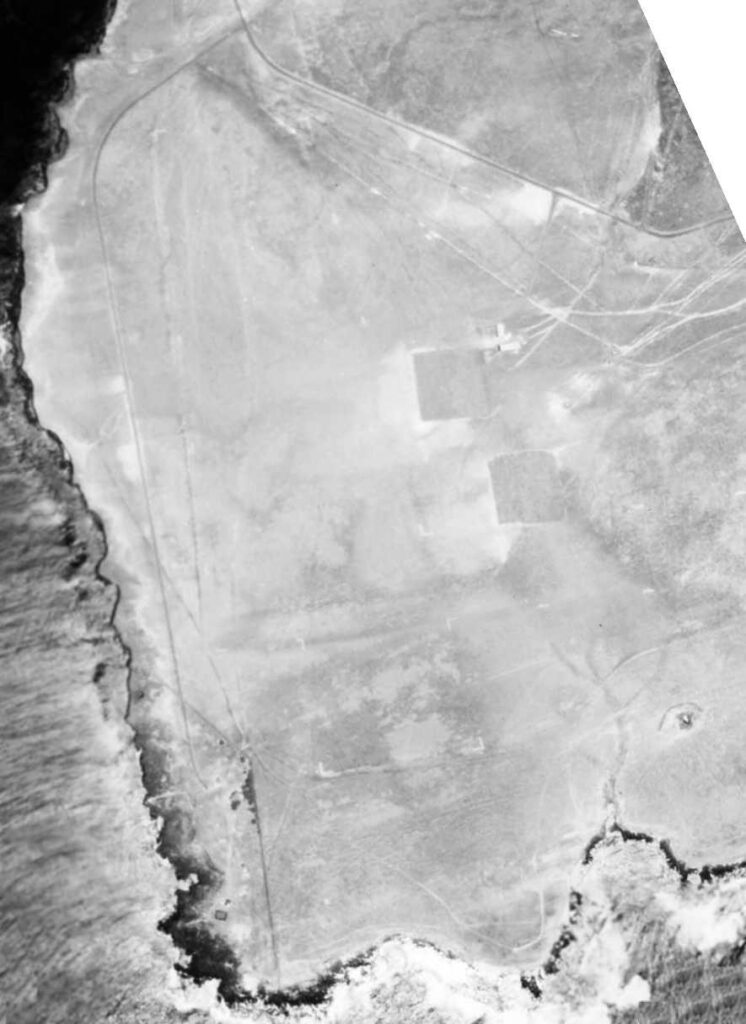Kalae Military Reservation, Morse Field, South Cape Airport, South Point Air Force Station (AFS) – it had a lot of names; it had a relatively short, but varied life. It was on the Island of Hawaiʻi, at Ka Lae, South Point.
In 1933, the War Department designated the airfield as Morse Field, in honor of 2nd Lt. Guy E Morse of the WWI 135th Aero Squadron. Morse was posthumously issued the Distinguished Service Cross for extraordinary heroism in action. He and his pilot (Wilbur C Suiter) fearlessly volunteered for the perilous mission of locating the enemy’s advance unit in the rear of the Hindenburg line.
Disregarding the hail of machine gun fire and bursting anti-aircraft shell, they invaded the enemy territory at a low altitude and accomplished his mission, securing information of the greatest importance. They at once returned to the lines and undertook another reconnaissance mission, from which they failed to return. (Suiter Field, the military’s air field that is now Upolu Airport, was named after 1st Lieutenant Wilbur C Suiter.)
Morse Field had a runway and one small barracks. Then, they expanded the facility and it was referred to as Kalae Military Reservation. In 1940, construction was underway on five buildings, runways and access roads at Morse Field. Activities were centralized at this airport inasmuch as its location shortened a routing through Oahu, the trans-Pacific air ferry route to Australia and the Philippines by approximately 200-miles.
The work on runways at Morse Field was suspended shortly after the attack on Pearl Harbor (December 7, 1941 – there were at least 2 fighters stationed at the strip when Pearl Harbor was attacked) and all adjacent smooth ground potential landing areas demolished as a precautionary measure against enemy use.
Blocking of landing areas on the island occupied large amounts of time and manpower due to the extensive areas involved and the comparatively smooth surfaces surrounding the field, which could be used as landing fields.
Later, construction increased the number of buildings to 5, built nine 50,000 gallon fuel tanks, a water line, access roads, and extended the runway to 6,000-feet. Morse Field was an earth field with a Marston Mat (steel grid) runway and was constructed as a temporary facility.
Gun emplacements were also added around the field. By December 28, 1941 gasoline storage facilities were complete, a water line installed and mobilization buildings were more than half finished.
After World War II, Morse Field was declared surplus by the military in 1946 and the Territorial Legislature placed it under the management of the Hawaii Aeronautics Commission (HAC.)
Rancher James Glover made a survey of the airport and found the buildings to be of no value except the corrugated roofing. He said he was in favor of keeping the airport open so that slaughtered cattle could be shipped out. He offered to maintain the airport at his own expense and to keep it open at all times as an emergency landing strip.
On November 3, 1947, the Commission made an application for the South Cape Airport to enter into an agreement with Mr. Glover. The U.S. Army granted a right of entry into Morse Field to the Territory on January 16, 1948.
Because of its remote location the HAC expected very little use by commercial airlines. Since satisfactory sites in this part of the island where aircraft could set down with safety in case of an emergency were non-existent, the Hawaii Aeronautics Commission decided to retain this strip as an emergency landing field.
With minimal maintenance (Hilo Airport staff made quarterly trips to Morse Field to perform minor maintenance and repair work,) by 1952 the field was found to be in bad condition due to erosion around the edges of the mats.
In the meantime, a new Federal Aid Highway project had been completed into Hilo, which caused the entire community to look to the Hilo Airport for their transportation needs. As a result, traffic into the field came to a standstill.
In 1954, the Territorial Director of Aeronautics requested abandonment of the airport; it was abandoned the next year.
In December 1964, the Air Force Systems Command announced that the Air Force would assume control of space tracking and communications from the Navy; the station closed the next year.
It was later reopened to support a sounding rocket probe program to evaluate advanced ballistic reentry system experiments. The close proximity and aspect angle of South Point to the optical site sensors located on the island of Maui were the primary reasons for launching the probes from this location.
In 1979, the Station was divided in two parcels located about 1.5-miles apart. One of the sites was the main operations area, while the other area was used for a radar tower. The Station was under the operational control of the Space and Missile Test Center (SAMTEC).
The short-lived South Point Air Force Station was one of the few Air Force installations in the State of Hawaiʻi that did not fall under the control of the 15th Air Base Wing. It belonged to the Air Force Systems Command (AFSC,) headquartered at Andrews AFB.
That use ended, too; in 1983 the executive orders for the facility were cancelled. Also in the 1980s, there were discussions about a private rocket launching facility here, but those never came to fruition. (Lots of info here from hawaii-gov and Freeman.)

























































